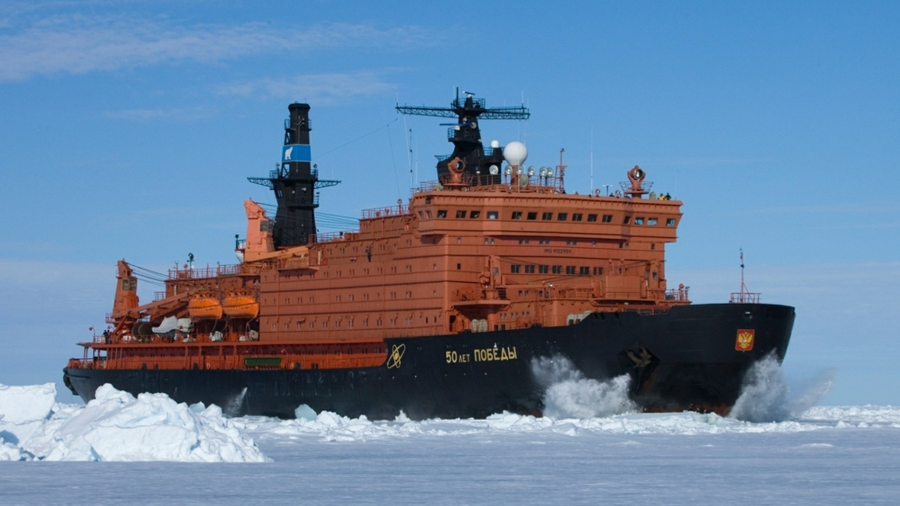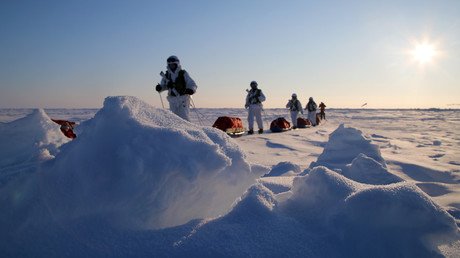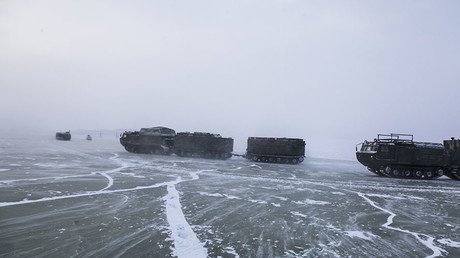Putin: Russia won’t threaten anyone in Arctic, but will ensure national safety

Russia will expand its presence in the Arctic to ensure the safety of its citizens, President Vladimir Putin said. While Moscow does not seek to intimidate anyone, it will continue to develop the vital region.
“We won’t threaten anybody, but, using our advantages, of a territorial nature in this case, we will ensure the security of Russia and its citizens. In this sense, the Arctic region is extremely important for Russia,” the president stated in a new documentary titled ‘Putin.’ The film was made by VGTRK reporter Andrey Kondrashov and shared on social media.
Moscow has already “reestablished itself firmly” in the Arctic, but other countries, including the US, are also seeking to expand their military presence there. US Ohio-class submarines, capable of carrying 24 Trident nuclear missiles, are very active in Norwegian Sea. The estimated time of arrival for such munitions from the Norwegian Sea to Moscow is only around 15 minutes, the president added.
Watch AWESOME footage of Russia’s Northern fleet perform amphibious drills in Arctic waters pic.twitter.com/dkkzToDoeE
— RT (@RT_com) 2 октября 2017 г.
Over the past few years, Russia has greatly expanded its presence in the region, constructing new bases and refurbishing old ones, erecting long-range radars and deploying new troops. At the moment, the country has four compounds there including the northernmost military installation, dubbed Arctic Trifoil. The station is the world’s only permanent structure built at 80 degrees latitude north of the Equator.
A new anti-aircraft complex, Tor-M2DT, designed specifically for the extreme conditions of the region, is expected to join Russia’s Arctic troops for weather-testing. The system, based on an off-road vehicle, is capable of safely passing across a range of difficult ground, including deep snow, shallow waters and marshes.
Putin also reaffirmed his commitment to maintaining and expanding Russia’s Arctic nuclear-powered icebreaker fleet, which is vital for both military and civilian use. The icebreakers accompany softer ships through the ice along Russia’s northern coasts, as well as guide them into the mouths of large rivers.
“Not a single [other] country in the world has a nuclear icebreaker fleet. The Soviet Union used to have it, Russia has it, and we have plans to develop a powerful new-generation icebreaker fleet,” Putin said.
While exploring and developing the Arctic region, Russia is paying particular attention to the ecological situation in the region. The Northern Clover military facility on the New Siberian Islands, for example, is an entirely closed self-sufficient complex, which has a minimum effect on the ecosystem.
“The Arctic has a very fragile ecology, it should be treated with great care. One should create infrastructure which ensures environmental safety,” Putin said.
If you like this story, share it with a friend!















